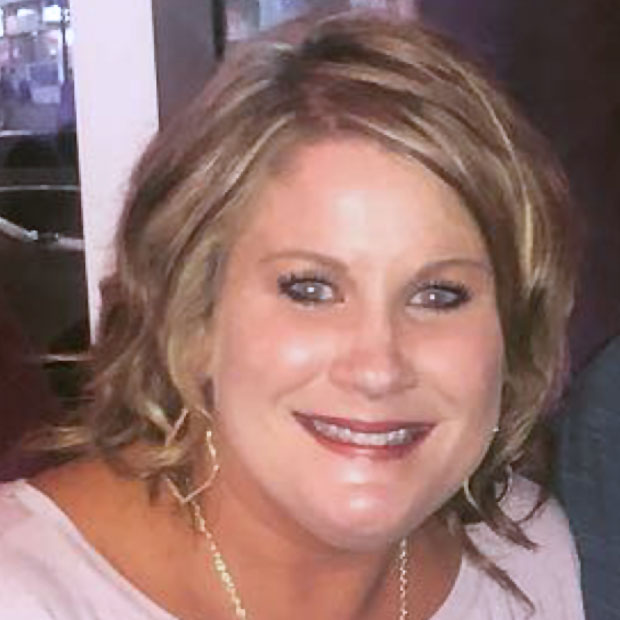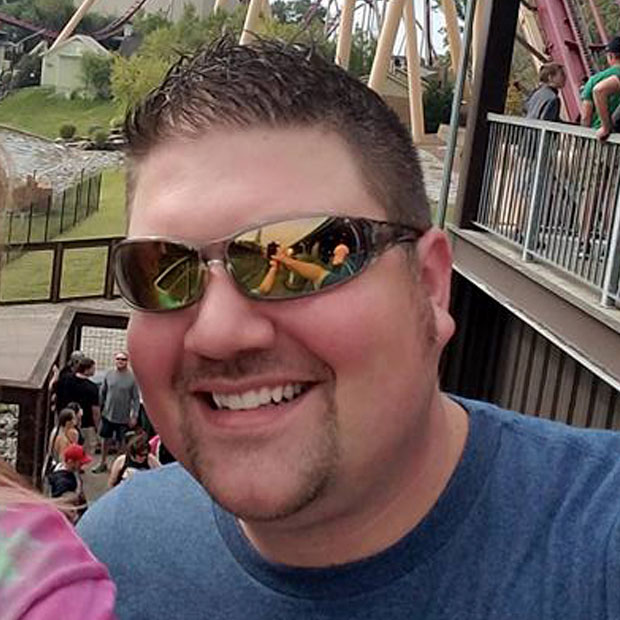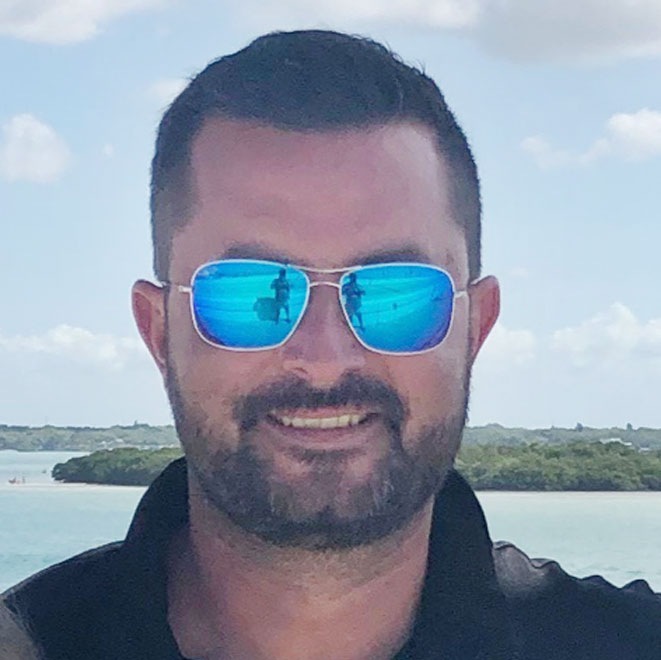Lumbar disc replacement is a surgical procedure to remove a damaged disc in the lower spine and replace it with an artificial disc. The lumbar spine is made up of the 5 vertebral bones and intervertebral discs between the rib cage and the pelvis. When one of these discs is damaged or pinches surrounding nerves, removing the diseased disc and replacing it with an artificial disc can relieve pain and restore spinal mobility.
Lumbar Disc Replacement
Who is a good candidate for Lumbar Disc Replacement?
Lumbar disc replacement is emerging as a viable treatment option for select patients with certain causes of low back pain or radiculopathy. However, it is not for everyone. Currently, the procedure is performed in carefully chosen patients whose pain has failed to respond to conservative treatment such as non-steroidal anti-inflammatory medication, corticosteroids, epidural injections or physical therapy. A surgeon who is trained in both spine fusion techniques and disc replacement technology is the best person to determine the most appropriate surgical option for you. In addition to a physical exam and medical history, your doctor may perform tests such as MRI, discography, CT scan and X-ray to verify the source of your pain and decide if you are a good candidate for lumbar disc replacement surgery.
When is surgery recommended for Lumbar Disc Replacement?
If you have worsening low back pain from a damaged or degenerated disc that limits your everyday activities, and all non-surgical methods of treatment have failed, you should consider surgery. The type of surgery you have depends on many factors including your overall health, the location and severity of your lumbar disc disease, and your pain and disability. It is very important that you are carefully screened by a surgeon who is trained in all types of spine procedures, including fusion and disc replacement, to decide the best course of action for you.
What is the recovery time for Lumbar Disc Replacement?
Because lumbar disc replacement avoids spinal fusion, it typically results in a faster recovery. Patients are encouraged to stand and walk within the first day. Most patients are able to go home from the hospital within one to two days. A lumbar disk replacement generally improves most low back and leg pain immediately. Some associated symptoms, such as numbness and weakness, will typically improve over time. It is important to discuss expectations with your surgeon. Full recovery ranges from a few weeks to a few months. However, as with all surgical procedures, specific recovery time varies by patient and demand.
Lumbar Disc Replacement in Saint Louis, Missouri
At the Disc Replacement Center of Saint Louis, we offer a variety of surgical and nonsurgical treatment options for degenerative disc disease, including lumbar disc replacement. If you would like to learn more about lumbar disc replacement or would like to schedule an evaluation to find out if you are a candidate, please contact our office at (314) 932-6486.
prodisc L Lumbar Disc by Centinel Spine
The prodisc L is approved for one or two-level use in patients with single-level degenerative disc disease at either L3/L4, L4/L5 or L5/S1 who have failed at least six months of nonoperative care. It’s designed to help restore the natural distance between two vertebrae and the natural motion of the lumbar spine. It consists of three implant components; two metallic endplates and a plastic inlay.
Lumbar Disc Replacement Patient Stories

Executive Account Manager and Field Sales Trainer Robbie grew up as a self-proclaimed “gym rat,” spending much of his free time either at the gym or playing hockey. Always active and healthy, Robbie loved pushing his body to its limits and trusted it to help him get the most out of life and enjoy each day—though he now realizes that he didn’t always recognize where those limits were in his youth.
Around 2016, his wife, Amanda, started encouraging Robbie to begin “lifting smart,” emphasizing using his core for better stability during weight lifting, and stretching more thoroughly and most importantly, more consistently. But then one day in August 2019, when he was lifting weights, he heard two loud pops—one right after the other—and he knew something was terribly wrong. His wife, a physical therapist, tried to help him with stretches when he got home, but within minutes he was literally crying out in pain and immediately stopped all activity. Suspecting he had herniated a spinal disc, Amanda encouraged him to go to the doctor, to which he agreed.
To get ahead of the injury, every day he attempted stretches, physical therapy, and even traction at his wife’s physical therapy practice. Nothing gave him much relief, and any relief was always temporary, leaving him in terrible pain. When he finally went to the doctor, an MRI showed that both discs were completely degenerated, with no fluid at the L4-L5 and L5-S1 levels. Additionally, both discs were herniated with evidence of tears. Robbie immediately began treatment with pain management and a chiropractor, and continued physical therapy, all with little positive effect.
Unfortunately, the effects of his injury were drastically impacting Robbie’s lifestyle. While his wife was “a total rockstar” all along, they were still missing social adventures that they would have participated in before Robbie’s injury, like a road trip because Robbie couldn’t sit in the car long enough. At one beach outing, Robbie stood for six hours because he couldn’t lie on the uneven sand.
His condition impacted other areas of his life as well. Robbie’s boss encouraged him to take a month off from his job, which required traveling to nursing homes, so that he could heal. Attempting to tough it out, he instead tried to continue life as usual despite his injury, but the ever-increasing pain forced him to take time off—spending an entire month lying flat on his back with little to no improvement. He resorted to taking hot showers multiple times a day just for the short-lived relief the moist heat provided. He also received PRP injections and cortisone injections. All of these treatments ultimately failed to provide adequate and long-term relief. That’s when Robbie finally started considering surgery.
Robbie’s spine surgeon presented two options, spinal fusion or disc replacement. Seeking a second opinion to ensure he fully understood all of the facts and alternatives, Robbie ultimately settled on total lumbar disc replacement with prodisc® L. With surgery approaching, Robbie found himself feeling both anxious and excited. Anxious, because it was surgery, after all—yet excited, because there was finally a potential light at the end of the tunnel of pain he had been living with for so long. Ironically, one of the MRI techs that helped with Robbie’s tests not only had a disc replaced herself, but had the replacement performed by the same doctor as Robbie, giving him great confidence going into his surgery. Armed with the knowledge of educational materials from his doctor and his own online research, the day finally came for Robbie to have his two-level total disc replacement.
Life After Lumbar Disc Replacement Surgery:
Robbie had surgery in September 2020 without complications. He was kept in the hospital about a day, making certain that he had no complications, and his body was functioning as it should.
At home, the pain medications wore off and he found himself in some discomfort. Robbie switched from prescription pain medications to ibuprofen and began feeling more like himself just 72 hours after his hospital release. Once the numbness from the surgery was gone, he discovered that the lingering pain he was feeling was simply from the incision itself and not from his spine. Robbie did develop a mild post-op infection, caused by his seatbelt rubbing against the incision, but a simple prescription took care of that.
He began physical therapy, including a lot of core strengthening exercises. The physical therapy was working, and Robbie was seeing his progress on a day-to-day basis. In approximately six to eight weeks, Robbie was feeling about 80%, and after about five months, he was able to return to playing hockey!
While Robbie is still working to get as close to 100% as he can, he is thrilled that he is now back to 90-95% full strength. He has continued his progress with yoga and a lot of stretching. Additionally, small changes, like keeping his feet on the bench while bench pressing, helps him ensure that he avoids arching or putting too much pressure on his lower back. He has learned his limits, doing everything he can to safeguard his future back-health. Robbie feels fortunate to feel minimal pain which seems to just be tight muscles—that are more noticeable without proper stretching and warm-ups before exercise. Robbie would encourage future patients to make sure that they ease back into things after surgery, especially physical activities, to ensure that they don’t suffer a setback.
Now back to doing all of the things he loves in life—like working out, hockey, golf, spending time with friends and family, and taking his dog Bauer out on adventures— Robbie is happy to spread the word about his injury, surgery, and recovery. As he enthusiastically notes, “If my story can help someone else feel more confident and comfortable moving forward with their own procedure, I’m more than happy to help!”

Gara was a young, vibrant college student trying to find her passion when she started having back pain and discomfort during her freshman year. Initially, Gara pushed through her pain and continued with her studies at college. However, as her pain worsened, she had to take a step back from her active lifestyle, which included working out, exercising, and intramurals. As her pain progressed, she started to notice how much it was limiting her. Gara could walk around the neighborhood but couldn’t do what she used to do with friends. She couldn’t even sit in her college classes for extended amounts of time—she could only sit for a little while, needing to stand in the back of her class to manage her discomfort and pain. In fact, she remembers the pain being so severe that daily activities like cleaning her home or doing laundry became burdensome. “Anything I did, whether it was house related or active with friends or school, was challenging,” Gara remembers. “Really, every part of my day was negatively affected, and I lived in fear.” She was constantly afraid that she was going to have a huge setback or pain flare-up if she did anything active.
Unsure of the cause of her back pain, Gara decided she needed to seek consultation with a specialist, who recommended conservative therapies. She tried epidural injections, physical therapy multiple times each week, and chiropractic care for pain relief. Gara was self-disciplined—following the conservative care plan directed by her physicians—and although these treatments provided temporary relief over the next two years, Gara realized that she was just “getting by”, and her pain was chronic. She decided to consult with a spine surgeon about long-term solutions and subsequently underwent an MRI which revealed she had degenerative disc disease.
Gara’s recalls her spine surgeon telling her, “Based on your age, there is a technology that may be life-changing for you. You’re going to wait until it is available.” Though she knew a spinal fusion was an option—considering it in discussions with her parents and friends—Gara worried about her ability to lead a long-term active lifestyle and to pursue her professional goal to be a child life specialist after fusion surgery. Importantly, Gara wanted a procedure that would give her continued mobility as a young adult.
When her spine surgeon discussed the total disc replacement technology, he said, “You’re doing everything you possibly can right now for your health and your back, and I promise you are going to be the ideal candidate for this procedure.” He was right. Having reviewed online resources and educating herself through speaking with her doctors, she knew in her head and heart that total disc replacement was what she needed—and what she wanted to do. Gara trusted her doctor and felt at peace with the decision to have the procedure. “Why I decided to get the procedure was to get my life back, knowing the future I wanted to have,” she says.
Life After Lumbar Disc Replacement Surgery:
Gara underwent total disc replacement with prodisc L in December 2007 and was in the hospital after her procedure for three nights—requiring an extra night’s stay due to significant muscle spasms in her spinal area. Her first week of recovery was, for the most part, full of bed rest. She exclaims, “I am so incredibly thankful that I listened to my doctor, took a leap of faith, and ended up doing the total disc replacement surgery.” Although her recovery was slow at first, she says it was well worth it to have the procedure done. Gara was fully prepared for her procedure and grateful that her doctor managed her expectations for recovery.
Though she initially struggled with post-operative nerve pain, within two weeks Gara’s back started to feel better. She had a lot of assistance at first and, although she was unable to do traditional physical therapy initially, she did aquatic therapy to help increase mobility and flexibility. Once she got in the pool for a few weeks, she was able to start physical therapy. Six months after surgery, Gara had completed physical therapy and was back to being independent.
The long recovery was worth it. Gara now has two kids and her back is stronger than it has ever been. She is able to be an active mom, enjoying activities like jumping on the trampoline with her kids, playing catch and basketball, and riding bikes—everything she hoped and dreamed. Gara is also able to participate in high-intensity workouts and if she needs to sit still for two hours, her back doesn’t hurt. Even traveling doesn’t hurt, and she’s now able to carry her own suitcase.
“Pursuing total disc replacement with prodisc L was truly one of the best decisions of my life—along with getting married and having my children, of course. Looking back, if I didn’t choose to get total disc replacement surgery with prodisc L, I wouldn’t be who I am right now. My back pain was debilitating and kept me from doing a lot of things in life, and I’m just happy I can be the person that I am now, completely pain-free.” she declares with enthusiasm.

Jeremy, a golfer and true handyman, has led an active lifestyle since a young age, but his initial struggles with back discomfort began when he was just a teenager. As a teen, Jeremy didn’t know why, or even what exactly the feeling was, yet now he is sure he was experiencing a burning sensation in his back. In fact, an old friend recently reminded Jeremy of how his lower back would regularly hurt when sweeping the floors or unloading a truck while working at his first job at 16 years old.
When Jeremy was in his mid-20s, he started to do more strenuous workouts, including running and weight exercises. Unfortunately, however, this exercise only served to exacerbate his pain. He has vivid memories of performing lying hamstring curls, only to have his back completely lock up to the point where he couldn’t move. After two or three times, these episodes began to terrify Jeremy—forcing him to stop doing the exercises and lay on the floor until he was able to move again.
As time went on, Jeremy sought chiropractic treatments—performing decompressions, adjustments, and electronic stimulation therapy for 2 to 3 years—but nothing provided long-term relief. Jeremy then tried physical therapy, nerve blocks, and epidural injections. Although some of these treatments provided temporary relief, his back pain would always return. So when his oldest son was born, Jeremy started to consider the option of back surgery, as lifting his 15-20 lb. son in and out of his crib and car seat would agitate the burning pain in his back.
Desperate for a more permanent solution, Jeremy’s chiropractor recommended an MRI on his back, which revealed a degenerated disc. Though the disc was herniated, initially it seemed not degenerated enough to cause any tingling or numbness. Seeking a second opinion, Jeremy took the MRI to a spine surgeon who was referred to him by a coworker. At first, because of Jeremy’s young age, the surgeon wanted to take a conservative approach to ensure they explored all other options, but after several conversations revealed Jeremy’s history with failed conservative care, his surgeon recommended a lumbar total disc replacement with prodisc L. The doctor even sent him a web-link to view a computerized model of the procedure that would be performed. Knowing that spinal fusion would restrict some movement, Jeremy decided that lumbar total disc replacement with prodisc L would be the best option.
Life After Lumbar Disc Replacement Surgery:
Jeremy underwent a lumbar total disc replacement with prodisc L in April 2010, spending only a single night in the hospital. The next day, his medical staff made sure he could walk a few steps, and as soon as he was able to do that, he was discharged to go home.
The first week of recovery wasn’t bad. He does recall having some muscle pain when he stood up or sat down, due to the procedure approach, but Jeremy notes, “My doctor told me before the surgery that it is going to feel like I just got done doing one-thousand sit- ups.” After recovering at home for two weeks, Jeremy was able to return to work. Although he also had some residual nerve damage for three months after surgery—which caused shooting pain down his legs—this, too, eventually subsided. While he still occasionally has some numbness and tingling in his toes, he is pain-free.
10 years after the procedure, Jeremy continues to live a full life. “Everyday life activities like cutting the grass, shoveling snow, and truly everything you could imagine was affected by my pain before surgery,” Jeremy reflects. “My life since prodisc L, surgery has been incredible! My back feels unbelievably better. I never thought it would be this way again.” Jeremy continues to enjoy his favorite activities like fishing, gardening, and house projects. He proudly notes, “I’m so glad I did this surgery, I would do it again in a heartbeat!”

Brian has always led an active life—from his high school sports career, including football and track & field, to 4 years of serving in the United States Marine Corps. However, at the age of 21, a few months before he was discharged from active duty, he began his journey with spine pain while working out in the gym with other Marines. He remembers it as if it was yesterday. “I had 315lbs on the bar and I was doing sets of 8. Last set, last rep, I brought the bar down and I heard and felt a ‘POP’. I came up, re-racked the weight, and headed to sickbay.”
Within hours Brian could barely walk. He had back pain and shooting leg pain down his right leg. While x-rays were taken, not much damage could be seen at this point. Focused on getting out of the Marine Corps and starting school at the University of Arizona, Brian opted for prescribed muscle relaxers and pain medication, which seemed to resolve some of the pain in the next couple of weeks. After that initial injury, though, he was never the same—having no idea that he had, in fact, herniated his L5-S1 disc on that day.
Life moved on and he was very proactive about staying healthy. His high school football coach happened to be a Chiropractor whom he would visit monthly for adjustments. Getting “adjusted” seemed to keep him going at the time. In fact, for a few years after the Marine Corps, his life was filled with athletic activities that included running, cycling, playing sports, and competing in triathlons.
Brian started his sales career in 2007 and he went to work for a medical device company whose products included a spinal disc replacement device named prodisc. In time, Brian was selling the prodisc device for both the lumbar spine (the lower back) and for the cervical spine (the neck)—considering these the best two products he was lucky enough to carry in his bag. He found that prodisc patients were happy after their surgeries, and in his experience from talking to his surgeons, these products performed very well. He even thought that he might “be on the table getting one of these implants” himself someday… and he was right!
Though he benefitted from conservative treatment for years, by 2016 his painful lumbar ‘blowouts’ kept lasting longer. Within a year he was living in a hyper-extended state (leaning backwards) and found it was the only way he could walk around with minimal pain. Brian was so focused on his back pain that he really didn’t pay attention to the pain radiating through the muscles in his neck. Concerned, the doctor ordered an MRI and found Brian’s C5-C6 spinal disc was totally closed down on the right side. With both the cervical and lumbar issues, the surgical plan became a C5-C6 cervical disc replacement and an L5-S1 lumbar disc—and with Brian’s experience with prodisc, he knew that this was his device of choice for both procedures.
Life After Lumbar Disc Replacement Surgery:
Brian had both his cervical and lumbar prodisc surgery on the same day in October of 2020. After the surgery, he recovered at home for a week before receiving a call from a surgeon asking him to support a surgical case with another patient receiving a disc replacement. By this point, he felt so well that he defied his surgeon’s advice and went back to work.
“I’ve seen the results from prodisc for 13 years, there was no way I was choosing any other option. Seven days out I was back in the operating room supporting a prodisc C case.” Brian has continued working ever since the surgery. Perhaps in part due to his back injury experience in the Marine Corps, he felt that a career in spine was the career he was meant to have. After 14 years, Brian affirms, “I love working in spine, I love working with spine orthopedic surgeons and neurosurgeons. Helping them help their patients is a great way to make a living.”